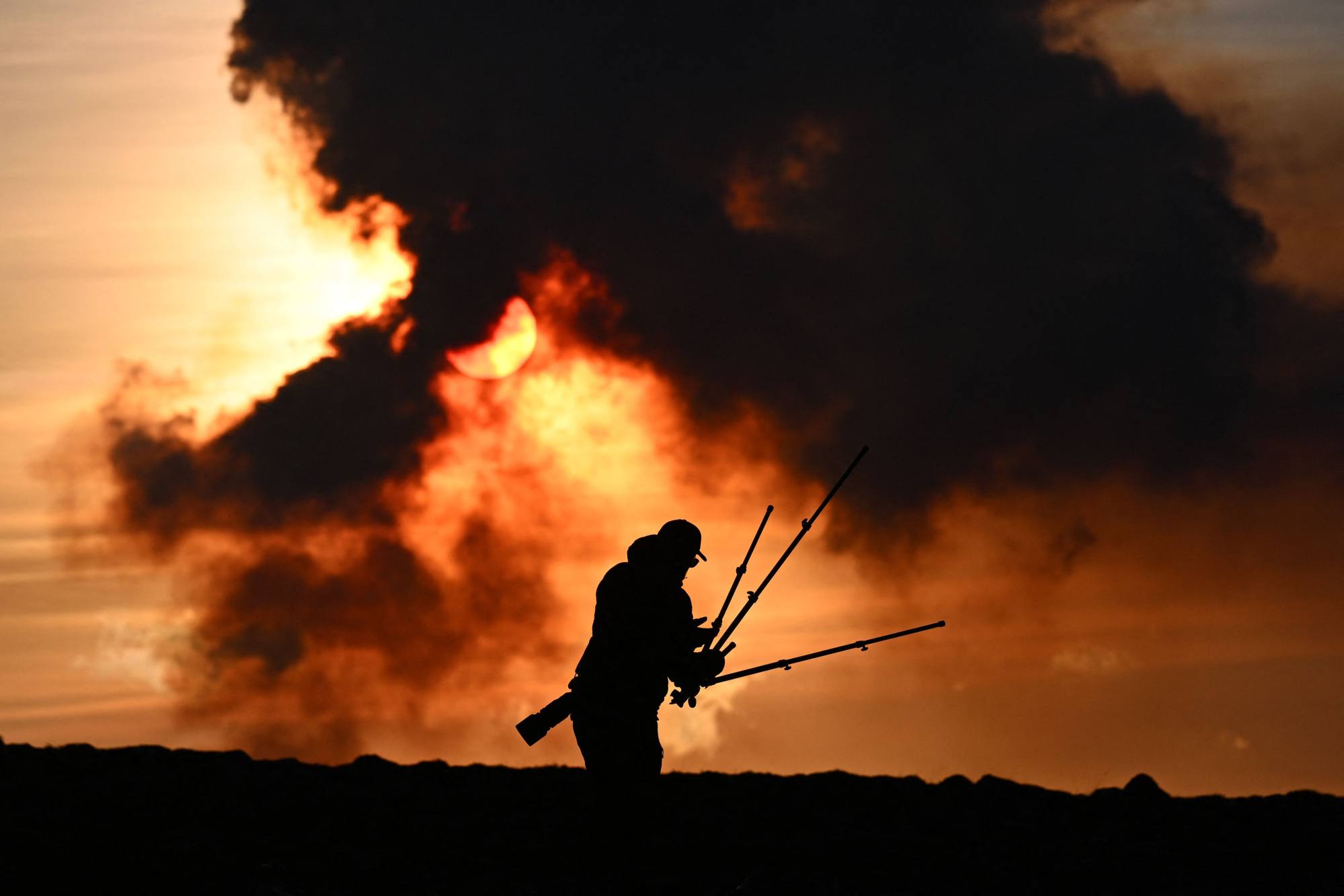Fountains of molten rock and smoke spewed from fissures in the ground across a wide area stretching to the town of Grindavík, where at least one house had caught fire, live video published by newspaper Morgunbladid showed.
“No lives are in danger, although infrastructure may be under threat,” Iceland’s President Gudni Johannesson said on social media site X, formerly Twitter. He said there had been no interruptions to flights.

The eruption began early on Sunday north of the town, which just hours before had been evacuated for the second time since November over fears that an outbreak was imminent amid a swarm of seismic activity, authorities said.
Authorities built barriers of earth and rock in recent weeks to try to prevent lava from reaching Grindavík, some 40km (25 miles) southwest of the capital Reykjavik, but the latest eruption have penetrated the town’s defences.
The nearby geothermal spa Blue Lagoon had closed on Sunday, it said on its website.
It was the second volcanic eruption on the Reykjanes peninsula in southwest Iceland in less than a month and the fifth outbreak since 2021.
Last month, an eruption started in the Svartsengi volcanic system on December 18 following the complete evacuation a month earlier of Grindavík’s 4,000 residents and the closing of the Blue Lagoon, a popular tourist spot.
Iceland volcano erupts after weeks of earthquakes
Iceland volcano erupts after weeks of earthquakes
More than 100 Grindavík residents had returned in recent weeks, before Saturday’s renewed evacuation order, according to local authorities.
Iceland, which is roughly the size of the US state of Kentucky, boasts more than 30 active volcanoes, making the north European island a prime destination for volcano tourism – a niche segment that attracts thousands of thrill seekers.
In 2010, ash clouds from eruptions at the Eyafjallajokull volcano in the south of Iceland spread over large parts of Europe, grounding some 100,000 flights and forcing hundreds of Icelanders to evacuate their homes.
Unlike Eyafjallajokull, the Reykjanes volcano systems are not trapped under glaciers and are thus not expected to cause similar ash clouds.

